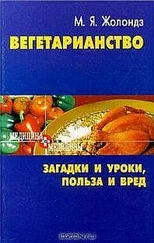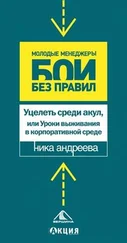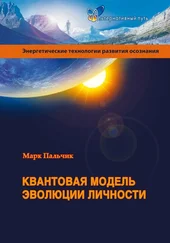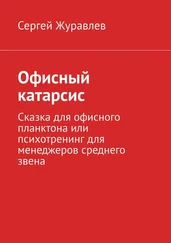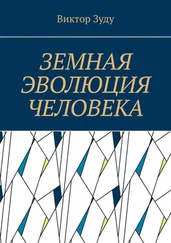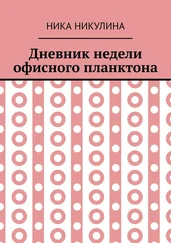Вернуться
145
J. Horne, “The End of Sleep: ‘Sleep Debt’ versus Biological Adaptation of Human Sleep to Waking Needs,” Biological Psychology 87, no. 1 (2011): 1–14.
Вернуться
146
Gregory Belenky at al., “Patterns of Performance Degradation and Restoration during Sleep Restriction and Subsequent Recovery: A Sleep Dose-Response Study,” Journal of Sleep Research 12, no. 1 (2003): 1–12.
Вернуться
147
Ester Zylber-Katz, Liora Granit, and Micha Levy, “Relationship between Caffeine Concentrations in Plasma and Saliva,” Clinical Pharmacology & Therapeutics 36, no. 1 (1984): 133–137.
Вернуться
148
Christopher Drake, Timothy Roehrs, John Shambroom, and Thomas Roth, “Caffeine Effects on Sleep Taken 0, 3, or 6 Hours before Going to Bed,” Journal of Clinical Sleep Medicine 9, no. 11 (2013): 1195–1200.
Вернуться
149
Ahmad Afaghi, Helen O’Connor, and Chin Moi Chow, “High-Glycemic-Index Carbohydrate Meals Shorten Sleep Onset,” American Journal of Clinical Nutrition 85, no. 2 (2007): 426–430.
Вернуться
150
S. H. A. Holt, H. J. Delargy, C. L. Lawton, and J. E. Blundell, “The Effects of High-Carbohydrate vs High-Fat Breakfasts on Feelings of Fullness and Alertness, and Subsequent Food Intake,” International Journal of Food Sciences and Nutrition 50, no. 1 (1999): 13–28.
Вернуться
151
James P. Burton, Jenny M. Hoobler, and Melinda L. Scheuer, “Supervisor Workplace Stress and Abusive Supervision: The Buffering Effect of Exercise,” Journal of Business and Psychology 27, no. 3 (2012): 271–279.
Вернуться
152
Amber J. Tietzel and Leon C. Lack, “The Short-Term Benefits of Brief and Long Naps Following Nocturnal Sleep Restriction,” Sleep 24, no. 3 (2001): 293–300.
Вернуться
153
Sara C. Mednick, Denise J. Cai, Jennifer Kanady, and Sean P. A. Drummond, “Comparing the Benefits of Caffeine, Naps and Placebo on Verbal, Motor and Perceptual Memory,” Behavioural Brain Research 193, no. 1 (2008): 79–86.
Вернуться
154
Tom M. McLellan, John A. Caldwell, and Harris R. Lieberman, “A Review of Caffeine’s Effects on Cognitive, Physical and Occupational Performance,” Neuroscience and Biobehavioral Reviews 71 (2016): 294–312.
Вернуться
155
Crystal F. Haskell, David O. Kennedy, Keith A. Wesnes, and Andrew B. Scholey, “Cognitive and Mood Improvements of Caffeine in Habitual Consumers and Habitual Non-consumers of Caffeine,” Psychopharmacology 179, no. 4 (2005): 813–825.
Вернуться
156
Yu-Kai Chang, J. D. Labban, J. I. Gapin, and Jennifer L. Etnier, “The Effects of Acute Exercise on Cognitive Performance: A Meta-Analysis,” Brain Research 1453 (2012): 87–101.
Вернуться
157
Charles H. Hillman, Kirk I. Erickson, and Arthur F. Kramer, “Be Smart, Exercise Your Heart: Exercise Effects on Brain and Cognition,” Nature Reviews Neuroscience 9, no. 1 (2008): 58–65.
Вернуться
158
Chang et al., “The Effects of Acute Exercise on Cognitive Performance: A Meta-Analysis.”
Вернуться
159
Chang et al., “The Effects of Acute Exercise on Cognitive Performance: A Meta-Analysis.”
Вернуться
160
Там же.
Вернуться
161
Там же.
Вернуться
162
Англоязычный ресурс. – Прим. пер.
Вернуться
163
Выступления на конференциях, организованных TED – американским частным некоммерческим фондом. Миссия фонда – распространение уникальных идей самой разнообразной тематики. — Прим. ред.
Вернуться
164
Grit – черта характера, якобы соединяющая в себе, с одной стороны, настойчивость в достижении целей, а с другой – устойчивость интересов человека во времени. Доказано, что концепция не является самостоятельной. — Прим. ред.
Вернуться
165
Институ́т Гэ́ллапа – американский институт общественного мнения ( англ . American Institute of Public Opinion), а также другие учреждения по изучению общественного мнения, основанные Джорджем Гэллапом. — Прим. ред.
Вернуться
166
Robert E. Kaplan and Robert B. Kaiser, Fear Your Strengths: What You Are Best at Could Be Your Biggest Problem (San Francisco: Berrett-Koehler Publishers, 2013); Silvia Moscoso and Jesús F. Salgado, “‘Dark Side’ Personality Styles as Predictors of Task, Contextual, and Job Performance,” International Journal of Selection and Assessment 12, no. 4 (2004): 356–362.
Вернуться
167
D. L. Joseph, J. Jin, D. A. Newman, and E. H. O. Boyle, “Why Does Self-reported Emotional Intelligence Predict Job Performance? A Meta-Analytic Investigation of Mixed EI,” Journal of Applied Psychology 100 (2015): 298–342.
Вернуться
168
Д-р Томас Чаморро-Премузик – профессор бизнес-психологии в Университетском колледже Лондона, вице-президент компании Hogan Assessments по научно-исследовательской работе, преподавал в Нью-Йоркском университете и Лондонской школе экономики. Автор семи книг и свыше 100 научных работ. — Прим. ред.
Вернуться
169
Tomas Chamorro-Premuzic, “Emotional Intelligence Is Not Quite Total B. S.,” Talent Quarterly, no. 14 (August 2017): 41–43.
Вернуться
170
Joseph et al., “Why Does Self-reported Emotional Intelligence Predict Job Performance?,” 298.
Вернуться
171
D. L. Joseph and D. A. Newman, “Emotional Intelligence: An Integrative Meta-Analysis and Cascading Model,” Journal of Applied Psychology 95, no. 1 (2010): 54.
Вернуться
172
Anders Ericsson and Robert Pool, “Malcolm Gladwell Got Us Wrong: Our Research Was Key to the 10,000-Hour Rule, But Here’s What Got Oversimplified,” Salon, April 10, 2016, http://www.salon.com/2016/ 04/10/malcolm_gladwell_got_us_wrong_our_research_was_key_to_the_10000_hour_rule_but_heres_what_got_oversimplified/.
Вернуться
173
David Z. Hambrick, Erik M. Altmann, Frederick L. Oswald, Elizabeth J. Meinz, Fernand Gobet, and Guillermo Campitelli, “Accounting for Expert Performance: The Devil Is in the Details,” Intelligence 45 (2014): 112–114.
Вернуться
174
Angela Duckworth, Grit: The Power of Passion and Perseverance (New York: Simon and Schuster, 2016).
Вернуться
Читать дальше
Конец ознакомительного отрывка
Купить книгу
![Марк Эффрон От планктона до акулы. Уроки офисной эволюции для амбициозных [калибрятина] обложка книги](/books/387792/mark-effron-ot-planktona-do-akuly-uroki-ofisnoj-e-cover.webp)

